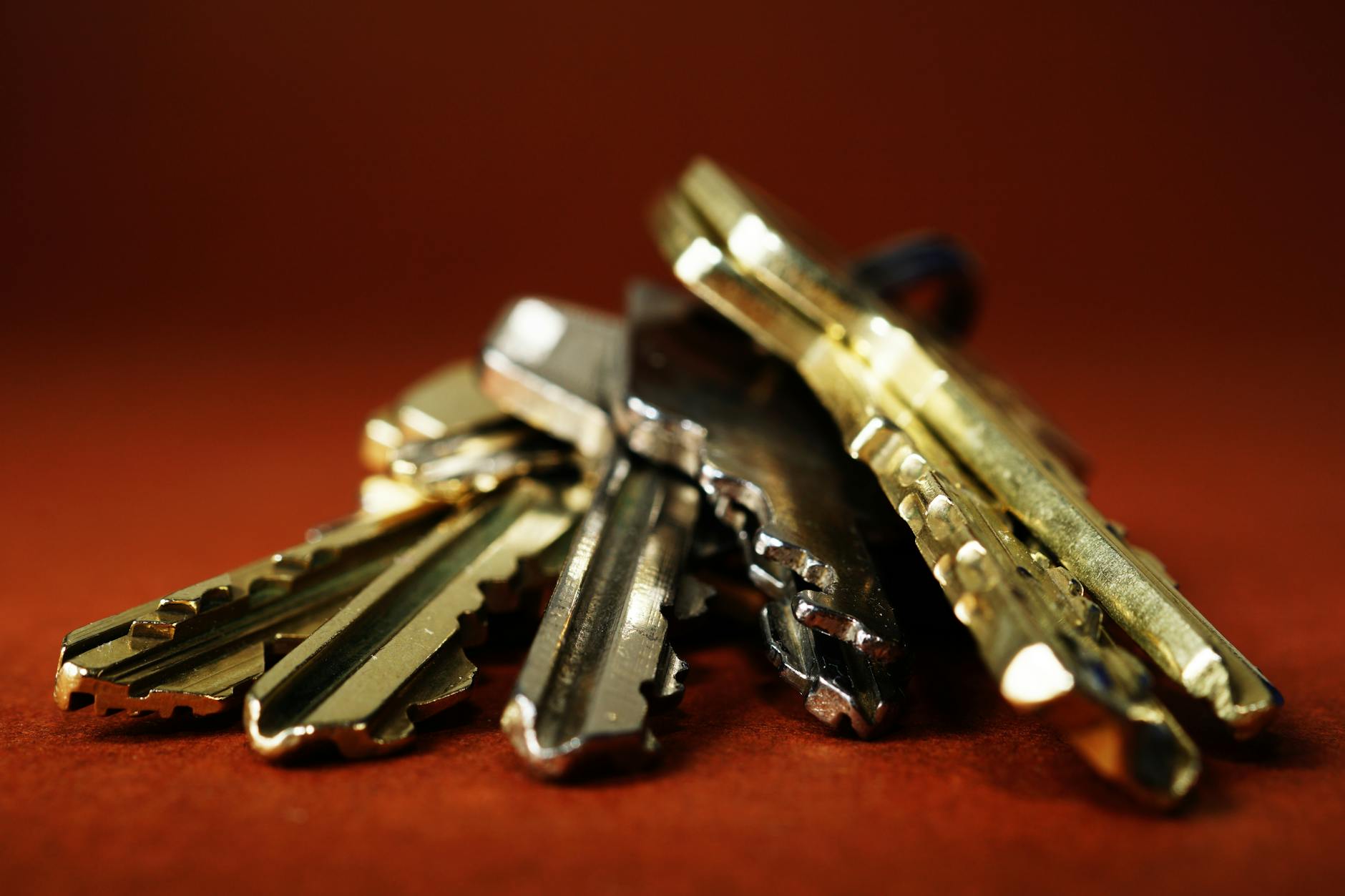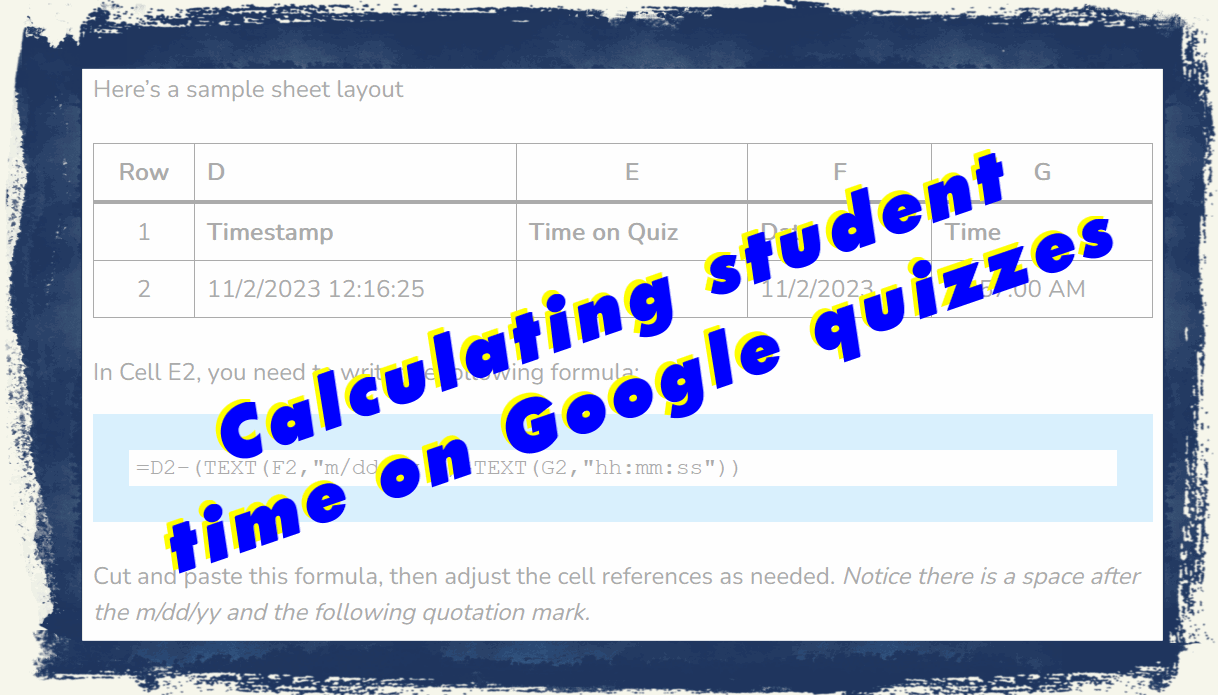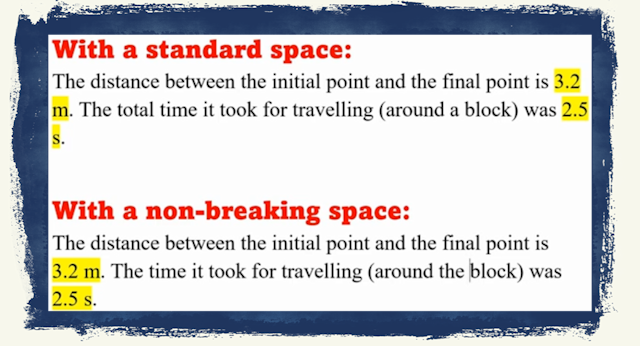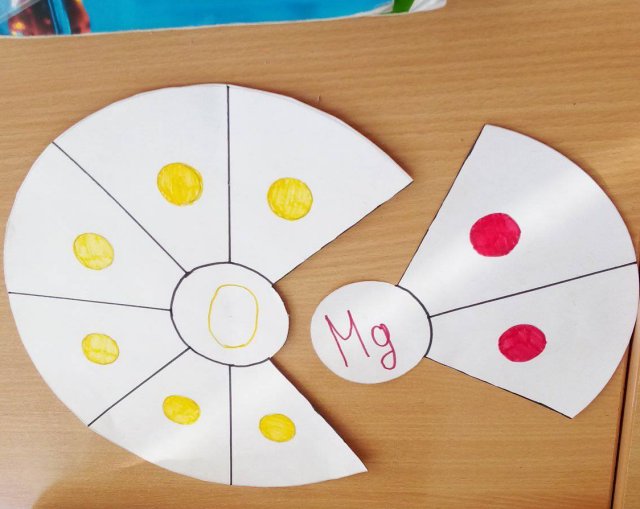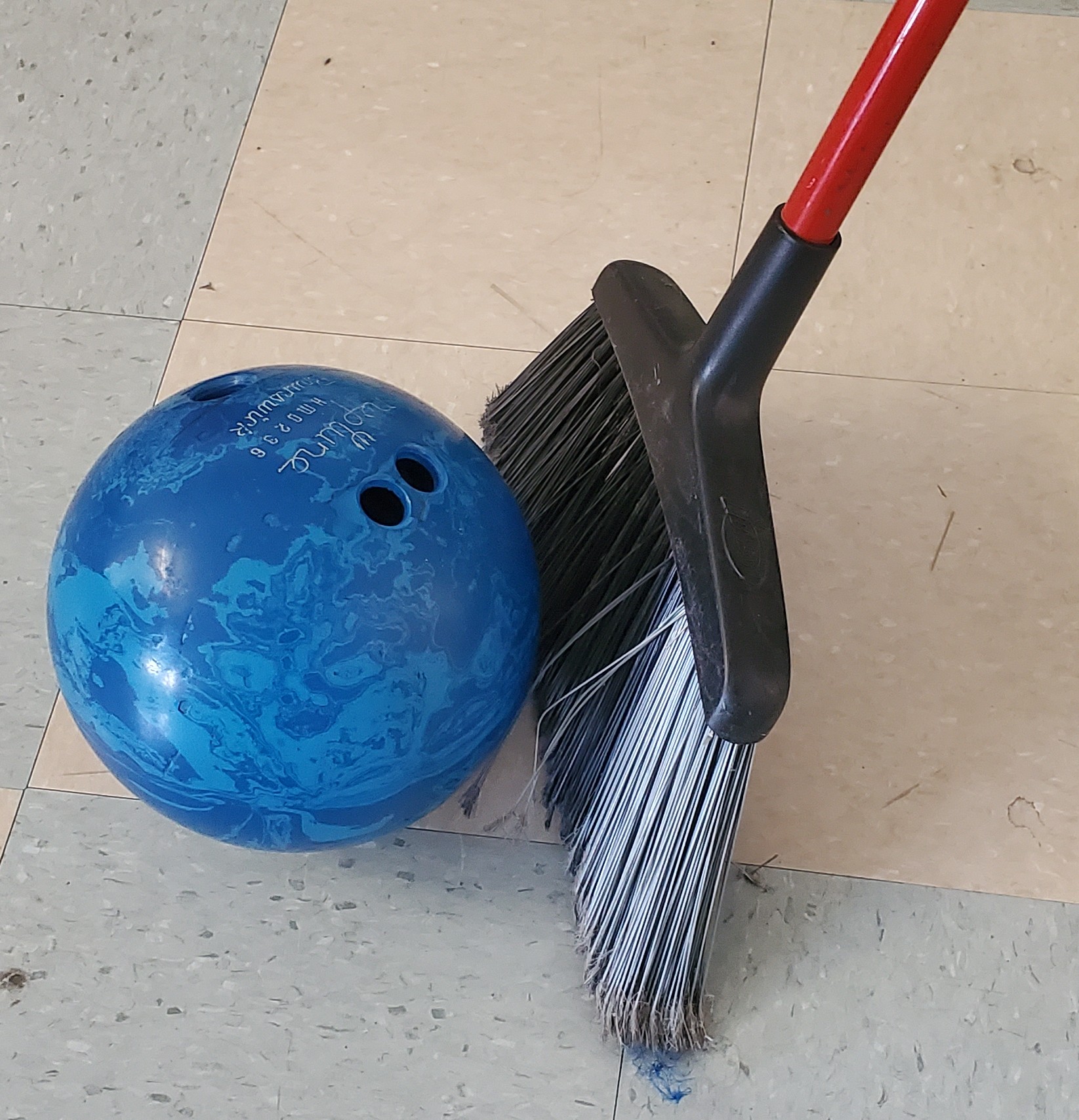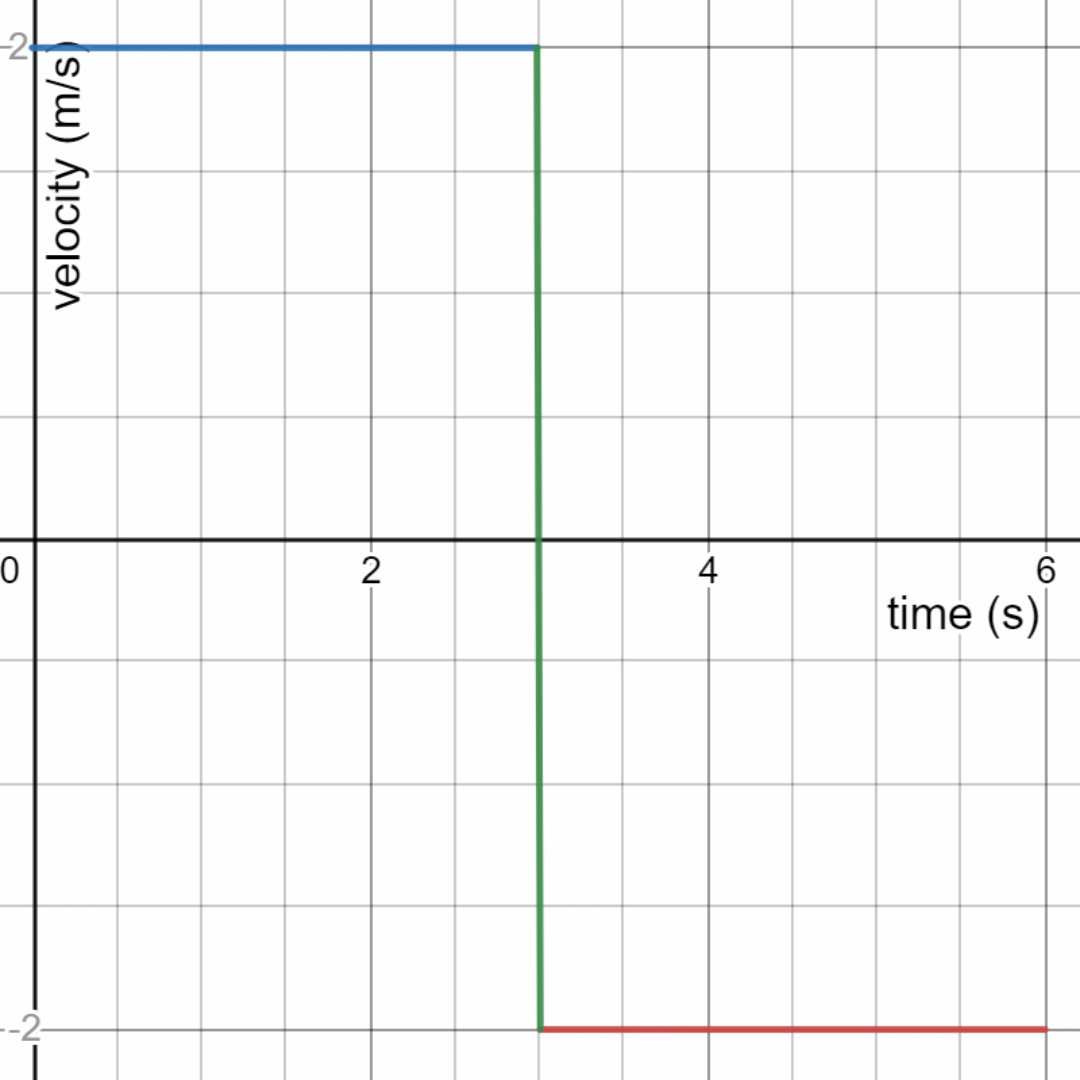A simple trick to keep your students from recognizing a key laying around on your desk.
Learn how to record/calculate the amount of time someone takes on a Google Form/Quiz. This does require the student to enter the date and time when they start the quiz, but other than that everything is done in a Google Sheet.
As a science teacher, I write a lot of documents that have numbers with units (e.g. 3.6 m/s). When readers see a number at the end of a line without units immediately following them, it is harder for them to keep the numbers and units. The 50 second video below shows the difference between regular spaces (what […]
This question focuses on the traditional grading system were all scores count the same, and a students’ final grade is based on the average of all the scores. The alternative presented is to look at trends in a student’s scores…looking for growth and allowing for early mistakes/low scores to not have as great an impact.
Here’s a great ionic bonding activity shared on the National Chemistry Teachers Facebook page. Students are exposed to valance electrons and matching for 1:1 ionic compounds. Two sizes are provided: One full page pies, and one with six pies on a page. Here is the PDF template.
Using a thermometer chart to help kids understand budgeting and saving.
Students use a broom to push a bowling ball through two different courses and calculate the forces involved….and challenging each other to get the best time.
n Modeling Instruction lessons, most units start with a ‘paradigm lab’ that initiates development of a conceptual model for the unit (‘concepts before math’). When introducing forces, the model presented here develops the relationship between ‘pushes’ and changes in motion. This post explains the procedures and pedagogical rationale for this activity.
A member of a physics teacher ed group asked the following question: First time physics teacher here with a graphing question- What would a velocity vs time graph look like if a car was to change direction without slowing down? I got this question and was not able to answer it. Thanks for your help!
There are many times in physics where you start with two equations and two unknowns. You can always solve for a set of problems if you have the same number of equations as you have unknowns. In-process page: More tips will be added soon. Of of the classic problems that is so common that we […]

